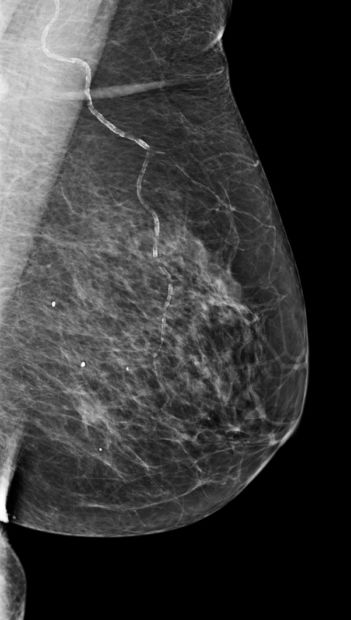Microsoft helps Volpara analyse mammograms
- August 16, 2022
- Steve Rogerson

New Zealand-based Volpara Health is collaborating with Microsoft to accelerate the research and development of software that uses mammograms to identify potential cardiovascular issues.
The collaboration’s intent is to expand breast cancer screening programmes’ ability to make cardiovascular assessments from routine mammograms.
Volpara, a health technology software company providing an integrated platform for personalised breast care, announced the research and development agreement with Microsoft to accelerate the creation of a way to detect and quantify breast arterial calcifications (BACs).
BACs are clusters and patterns of calcification that appear on the mammogram image and may indicate heart disease or high risk of disease.
The collaboration shows a commitment to improving women’s health through science and innovation. It will build upon Volpara’s approach to quantitative and objective breast density scoring using artificial intelligence (AI).
Capitalising upon Volpara’s recent BAC patent, the aim is to create a tissue composition map that identifies and quantifies BAC from a mammogram, helping radiologists identify the need to take steps towards prevention of heart disease. Integrating Microsoft Azure Machine Learning, part of the Azure AI platform, should help improve Volpara’s BAC model and data processing.
This project is an expansion of the companies’ relationship over the past decade. Last year, Volpara’s work in supporting healthcare providers was recognised with its SaaS (software-as-a-service) Award win at the Microsoft New Zealand Partner Awards.
Microsoft SaaS and cloud products have played a fundamental role in supporting Volpara’s development of the FDA-cleared version of its core AI algorithm. To date, the algorithm has been used to assess the breast composition of more than 14.5m women through Volpara’s analysis of over 67m mammography and tomosynthesis images. These images, representing one of the world’s largest de-identified image datasets, will prove a pivotal resource for the BAC project.
The BAC product, as a cardiac decision-support tool for radiologists, would mark Volpara’s entrance into a new area of care, part of a $146.4bn cardiovascular disease market. With access to over 35 per cent of the US breast screening market, Volpara has the installation base to facilitate rollout and adoption of the product, creating a revenue stream.
For women, the BAC product would add a dimension to their regular breast screenings, providing important information about their cardiovascular health. Any significant BAC findings could be delivered through the Volpara Breast Health Platform directly to the healthcare provider or through Volpara’s partner network.
Recently, Volpara announced Teri Thomas as the new chief executive officer, with cofounder and former CEO Ralph Highnam transitioning to chief science and innovation officer. As part of his new role, Highnam will spearhead the BAC initiative.
“The trusted relationship we have built with Microsoft over the years is important to Volpara’s future, especially our utilisation of Azure for machine learning and product development,” said Highnam. “Our mission and vision around the future of healthcare align well with Microsoft’s. Though we are in the early stages of BAC product development, this collaboration will accelerate our efforts as we advance science together.”
Tom McGuinness, corporate vice president at Microsoft, added: “Early detection of heart disease can have lifesaving implications. With early knowledge, patients can work with their physician to stop or slow progression. Integrating Azure Machine Learning as a service with Volpara allows providers to connect data and look for meaningful signals through predictive analytics. Through this technology, physicians can identify cardiac risk in patients who may not be aware that they’re at higher risk, empowering them and their provider to take proactive steps towards their health.”
Founded in 2009 on research originally conducted at the University of Oxford, Volpara has seen its technology and services used by customers and research projects in 40 countries. The work is supported by 100 patents, over 200 peer-reviewed publications, the security certifications, and numerous trademarks and regulatory registrations, including FDA clearance and CE marking. Since listing on the ASX in April 2016, Volpara has raised A$132 million. With offices in Seattle and Boston, Volpara is based in Wellington, New Zealand.




